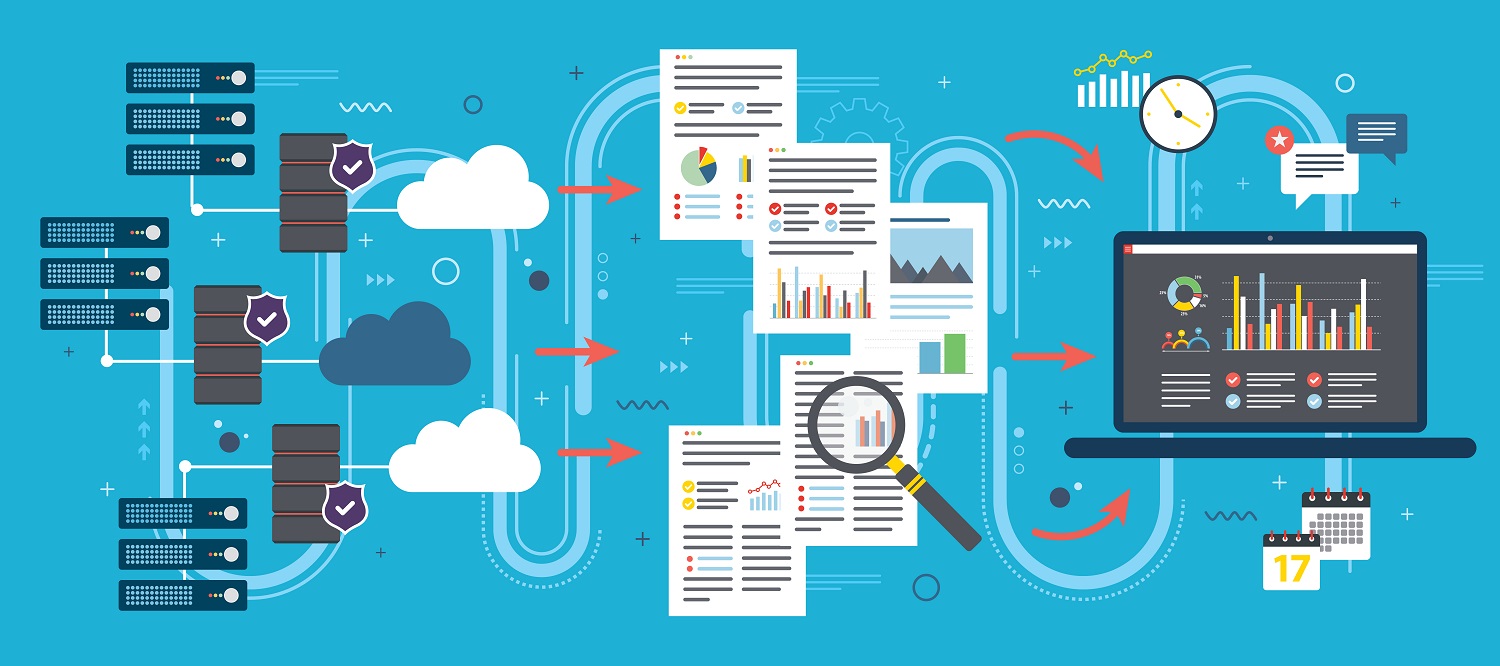Competitive pressures force businesses to increase risk-taking. But the fast-paced nature of changes, with short-lived trends, make risk-taking a challenge. Many businesses rely on Business Intelligence (BI) tools to make informed decisions and reduce the risk intensity. These tools toy with data to offer insights on the consumer, track performance of KPI, generate dynamic reports and more.
Not all BI tools are equal though. Nowadays, businesses prefer cloud-based BI-solutions to conventional, on-premises solutions. This technology blog lists the seven key reasons for such preferences.
1. Easy Implementation
The three key processes of any business intelligence solution are:
- Extracting the right data
- Organising the data neatly in an easily accessible depository,
- Applying various algorithms to deliver insights.
Before the cloud went mainstream, most enterprises hesitated from implementing BI solutions. The huge cost, resources and expertise involved made it nonviable for all except a few large firms.
Conventional BI solutions required dedicated in-house servers and the associated paraphernalia. Long procurement cycles, complex licensing agreements, and other requirements made it a non-starter.
Cloud-based BI solutions, hosted over virtual networks, enable hassle-free implementation. Businesses may buy the required package and hit the ground running. The BI-as-service provider takes care of the hardware, updates, maintenance, and backend processing.
2. Mobility and Ease of Access
Cloud-based BI solutions, delivered through mobile devices, make BI resilient and easy to access. With BI-as-a-service, strategy and planning become live, 24x7x365 functions. Managers and planners may collaborate from anywhere, taking the office out of the equation.
The cloud hosts data in terabytes. BI-as-a-Service providers process data and offer business direct access to cleaned data sets. Businesses create dashboards, accessible across multiple devices, through web browsers or apps. Custom views and reports based on hierarchy, roles, and geography of the decision-makers become a piece of cake. Users may access the data and reports they need, in the format and options they choose. New-gen solutions such as voice-activated analytics interfaces improve UX and accessibility further.
3. Scalability
Easy scalability is an inherent advantage of the cloud. Businesses using cloud-based BI solutions scale-up as needed, without investing in new infrastructure. Likewise, they shed excess capacity when peak demand reduces.
Scalable BI applications increase user adoption and self-service. Scalable tools make available dashboards and reports to any number of users, without having to limit access to a few for want of capacity. Such democratisation of data, making it accessible to the rank-and-file does wonders for enterprise efficiency and quality of decisions.
Analytic scalability allows a user to represent data in the most useful way, without being restricted by a format or type.
While the enterprise decides on the scale of resources required, the cloud provider takes care of bacon tasks, such as data refresh capability, redundancy, and distribution, to keep the system running smoothly.
4. Improved Collaboration

Cloud-based BI tools improve collaboration. Storing or analysing data in the cloud removes silos, and makes sharing of information easier.
Powerful analytical and reporting capabilities improve coordination among teams. For instance, sales and marketing may share data in real-time, and work in tandem to close the sale. The solution provider may tweak the configuration to customise it for different users.
Most cloud providers offer multi-tenant environments. This allows different users to access the required data through different devices or points. Many enterprises prefer single-tenant cloud environments though, to improve performance and security. Single-tenant cloud has only one point of access, improving security.
5. Improved Reliability and Security
The cloud improves the reliability of the Business Intelligence platform. Leading BI-as-a-solution providers provide redundant platforms. The data, stored across many data centres across the world, is available at all times. The provider takes care of any accessibility and distribution issues.
BI providers ensure data security in innovative ways. Azure Trust Center, for instance, integrates with Azure Active Directory (AAD) to enable authorization, encryption of data in motion and at rest, IP restrictions, and threat detection. Different providers offer various security layers, such as voice recognition, fingerprint authentication protocols, 2FA authentication, and more.
6. Advanced Analytics
The cloud offers a reliable data layer to perform advanced analytics.
It consolidates data from sales, marketing, HR, logistics, finance, operations, and other sources, to eliminate opacity hampering efficient decision-making. For instance, real-time visibility into sales forecasts, bookings, shipments, inventory, and other critical business data improves supply chain efficiency and gross margins.
The combination of the cloud and the AI delivers potent analytical capabilities. Self-learning data platforms analyze disparate data from different sources and create personalised data sets. Relational search with custom-built, in-memory relational data cache speeds up queries.
Tableau solved beverage giant Coca-Cola’s problem of maintaining reports for its sales vertical. The company generated tons of data from different systems and found keeping track of reports challenging. Tableau helped Coca-Cola create separate dashboards for every task, establishing a “single source of truth” even while effectively analyzing the performance of various departments in detail. Automated refreshes delivered updated reports, through mobile apps, for instant follow-up action.
7. Lower Cost
For most enterprises, a cloud-based BI solution is far cheaper than a conventional on-premises solution.
The cloud coverts CAPEX costs required to set up a BI platform into an OPEX cost. An on-premises solution incurs huge costs for hardware, software, real estate, electricity, depreciation, security, and deployment. Cloud subscriptions eliminate all these, for an hourly price depending on the performance level. The small, recurring cloud subscriptions are manageable and easily attributable.
Multi-tenancy cloud subscriptions share resources across multiple users. This drives down cost further compared to a single-tenanted cloud solution. But it comes with a risk of enterprise data mixing up with the data of another user.
The cloud offers flexible self-service options. With enterprise, IT no longer called in for updates or fixing glitches. IT teams, with a load off their backs, become leaner and more focused on growth.
Businesses that leverage cloud-based BI solutions transform into highly efficient and competitive enterprises. The global BI software market was worth $14.3 billion in 2018. As more and more enterprises become convinced of the benefits and join the bandwagon, the market will grow at 19.1% CAGR to reach $28.77 billion by 2022.











